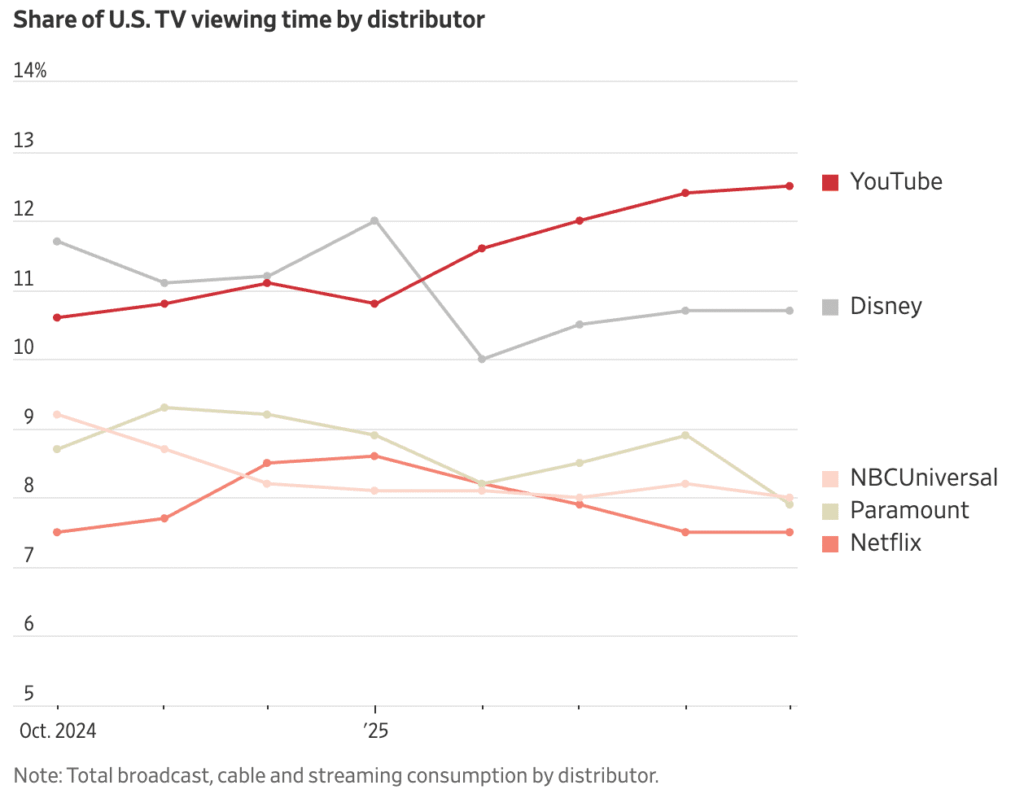Wow, can you believe it? YouTube, the platform we once knew for quick cat videos and DIY tutorials, has officially dethroned traditional TV and even streaming heavyweights like Netflix to become the most-watched TV platform in the U.S. in 2025. According to recent data, Americans are now clocking over 1 billion hours of YouTube content daily on their living room TVs—surpassing viewing on phones, desktops, or any other device. It’s a massive shift!
I remember when mobile was king, but now, with global TV viewing hitting 44% (edging out mobile’s 40%), YouTube is redefining how we binge-watch. In this article, we’ll dive into the stats, the creator boom in longer videos, app enhancements keeping viewers glued, and what this means for the future of entertainment. Stick around—you might just rethink your next streaming session.
The Explosive Growth of YouTube TV Viewing in the U.S.

- Break down the latest Nielsen data showing YouTube’s share of U.S. TV viewing time climbing to over 12% in 2025, outpacing competitors like Netflix, Disney, and NBCUniversal.
- Highlight the graph illustrating YouTube’s upward trend from 2023 to 2025, while traditional broadcasters and cable decline.
- Discuss how this positions YouTube as the top streaming service on TVs, with daily watch time exceeding 1 billion hours globally—more than on mobile devices.
- Explain the shift in viewer habits, including the rise from 40% mobile viewing to 44% on TVs, and what factors like smart TV adoption are fueling this.
Why Viewers Are Flocking to YouTube on Big Screens

- Explore the appeal of YouTube’s diverse content library, from user-generated videos to premium shows, making it a go-to for living room entertainment.
- Analyze global device trends from the provided graph, showing TV viewing surging while mobile dips slightly from 2023 to 2025.
- Cover how features like seamless casting from phones to TVs and integration with smart devices (e.g., Roku, Apple TV) make YouTube more accessible than ever.
- Touch on demographic insights, such as families and older audiences preferring the big-screen experience for relaxed, communal viewing.
Implications for Creators, Advertisers, and the Streaming Industry

- Discuss opportunities for YouTube producers to capitalize on this trend by focusing on premium, TV-optimized content that rivals Netflix originals.
- Explore challenges, like competition from TikTok or traditional media, and how YouTube’s data-driven approach gives it an edge.
- Analyze advertiser benefits, with longer watch times translating to better ad performance and higher ROI on TV-connected devices.
- Speculate on future trends, such as potential integrations with live TV or AI-driven personalization, solidifying YouTube’s dominance in 2025 and beyond.

